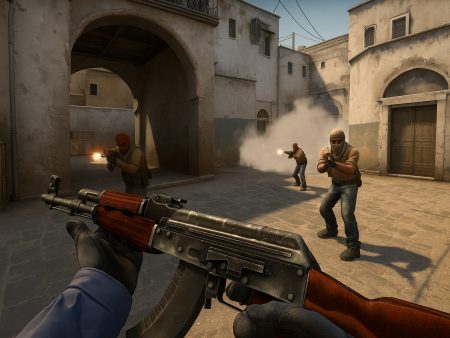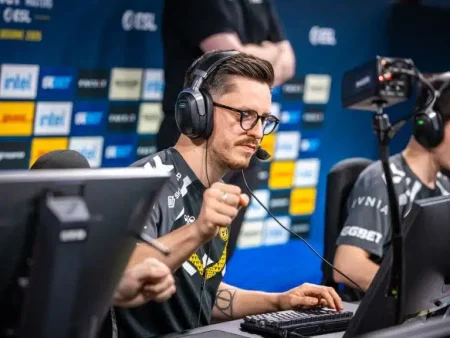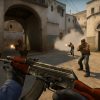Master T-side gameplay in CS2 with this in-depth guide on default strategies. Learn map control, utility usage, and pro tips to outplay CTs and win more rounds.
When it comes to playing Counter-Strike 2 (CS2), understanding how to master the Terrorist (T) side is essential for improving your overall performance and helping your team secure rounds. T-side gameplay isn’t just about planting the bomb and winning rounds through brute force. It’s about smart map control, perfect timing, clean communication, and outthinking the Counter-Terrorist (CT) team. In this guide, we’ll break down the default T-side strategies—step by step—so you can learn how to play smarter, not harder.
Whether you’re solo queuing or playing with a coordinated team, understanding the fundamentals of how the T-side works gives you a massive edge. We’ll explore key setups, the importance of roles, how to control maps like a pro, and avoid the most common pitfalls. This isn’t just a list of strategies; it’s a deep dive into what makes great T-side players tick and how you can start dominating your matches.
Ready to outsmart your opponents and clutch those rounds? Let’s get into it.
Understanding the Role of T-Side in CS2
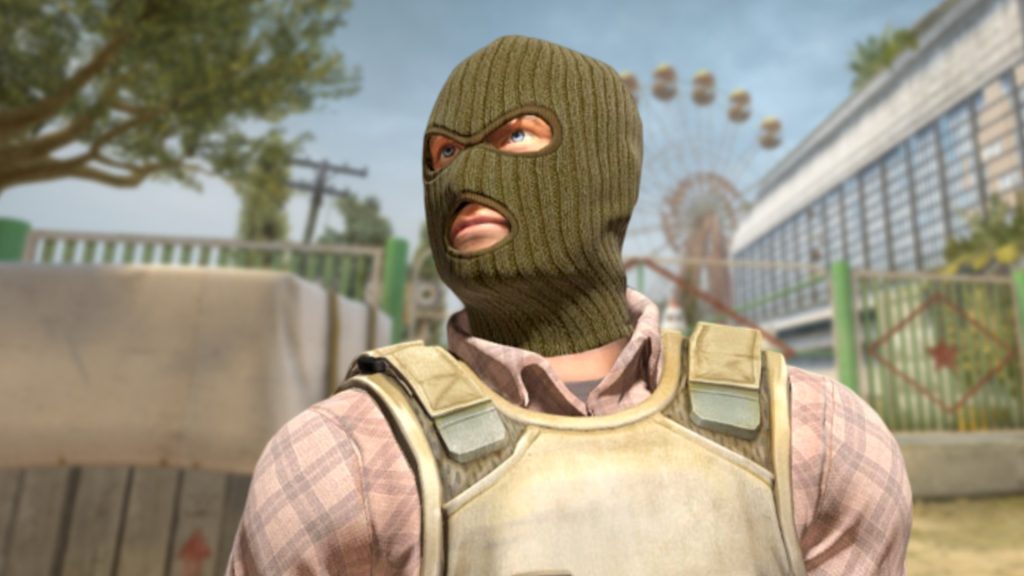
Objective of Terrorist Side
Your main job on the T-side in CS2 is straightforward: either eliminate all enemies or plant the bomb and defend it until it detonates. However, accomplishing this is anything but simple. As a Terrorist, you’re the aggressor. That means you have to push into territory controlled by the Counter-Terrorists, who have the advantage of defense, faster rotations, and often stronger initial positioning.
This role demands calculated aggression. You’re not just rushing B every round; you’re taking space carefully, gathering intel, and forcing CTs to react to your game. A good T-side strategy involves taking early map control, baiting out utility, and choosing the right time to strike.
Key Differences Between T-Side and CT-Side
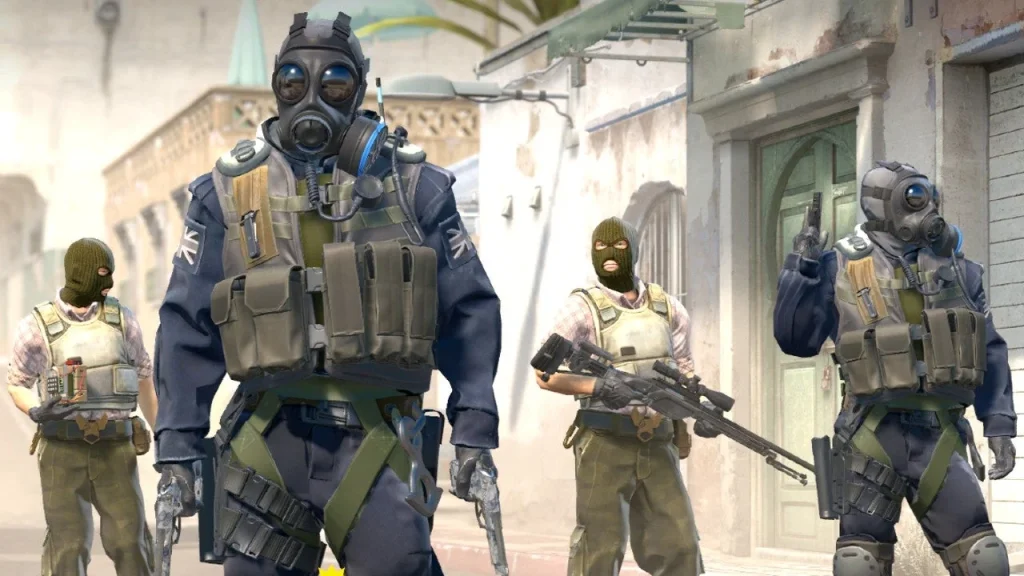
One of the biggest differences between the T and CT sides is initiative. On T-side, you set the pace. You decide when and where the engagements happen. On CT-side, your job is to respond—but that also means CTs often have more map control early in the round.
T-side also requires more cohesive teamwork. You need well-timed flashes, smokes, and coordinated pushes. One mistake—like peeking without a trade partner or missing a smoke—can cost the entire round. That’s why understanding the “default” is so important: it provides structure without being too predictable.
Fundamentals of T-Side Gameplay
Economy and Buy Rounds

The T-side economy in CS2 is both your biggest strength and your biggest weakness. On one hand, you get $800 more for planting the bomb—even if you lose the round. On the other hand, your weapons tend to be weaker in long-range fights, especially against rifles like the M4A1-S.
Learning when to buy, when to save, and how to manage your money as a team is crucial. Here are a few economic fundamentals:
- Eco rounds: Save your money, maybe use pistols and light armor.
- Force buys: Riskier buys with cheaper weapons like Tec-9s or SMGs.
- Full buys: Everyone has AKs, full armor, and utility.
On the T-side, coordinating full buys and maximizing your economy by planting the bomb—even in lost rounds—is how you build momentum.
Map Control: Why It’s Crucial
Controlling parts of the map (like mid on Mirage or banana on Inferno) gives you information and pressure. If the CTs don’t know where you’re leaning, they’ll have to spread out and hold multiple angles—making them easier to pick apart.
Map control isn’t about rushing in. It’s about using utility to clear out common spots, holding your ground, and forcing CTs to rotate or make mistakes. A team with good map control can execute on either bombsite at will, or fake a site to draw out rotations and hit the other.
Communication and Team Synergy
CS2 is not a solo game. T-side demands high-level communication—whether that’s through voice chat or in-game pings. Call out CT positions, utility usage, rotations, or even if you’re just making noise somewhere to draw attention.
Great teams play like a hive mind. When one player pushes, another follows up. When someone gets a pick, the team instantly adjusts. Playing T-side without synergy is like trying to conduct an orchestra with no instruments—it’s not going to work.
Default T-Side Setup in CS2
What is a “Default” in CS2?
A “default” setup is a standard round start where each Terrorist takes a specific position across the map. Instead of rushing into a site or doing a pre-planned execute, you play slow, wait for aggression, and look for openings. The goal of a default is simple:
- Gain map control
- Spot any early CT pushes
- Burn enemy utility
- Find a pick or exploit a weakness
Think of a default like a chess opening. You’re developing your pieces and setting up for a mid-round play. It’s the most balanced and information-heavy way to start a round.
Positioning and Roles in a Default Setup
A proper default involves distributing your team across the map to gather intel and apply pressure. Here’s how it usually breaks down:
Lurkers
The lurker’s job is to hang back and catch rotating or flanking CTs off guard. They often play solo and require strong game sense. A good lurker can win the round just by holding their ground and punishing overextensions.
Entry Fraggers
These players lead the charge during site executes. They take the most dangerous roles and need sharp aim and confidence. Entry fraggers rely heavily on teammates to flash them in or trade kills.
Support Players
Support players hold angles, throw smokes, flash for teammates, and watch for pushes. They are the glue that holds the default together. While not always in the spotlight, they make sure the execute goes smoothly.
Executing a Default Strategy
Gathering Information and Applying Pressure
Once you’ve established your default positions, it’s time to slowly apply pressure. Use utility to clear angles, listen for sound cues, and force CTs to show their hand. If they molly a choke point early, that tells you something. If you hear two rifles shooting from one site, that’s useful info.
Apply just enough pressure to keep the CTs uncomfortable. Fake footsteps. Throw a smoke or flash to suggest an execute. These micro-movements help control the pace and let you adjust accordingly.
Mid-Round Calls and Adjustments
Based on what you learn during the default phase, the in-game leader (IGL) should make a mid-round call. Did you get a pick on B? Rotate and hit fast. Did you draw out 3 CTs toward A? Fake and go B instead.
Default strategies are fluid. If nothing opens up, group up and execute with full utility. If someone gets an early pick, explode into that site. The beauty of a default is its adaptability.
Taking Map Control Step by Step
Don’t try to take the whole map at once. Focus on one area at a time:
- Take mid control first (usually with two or three players).
- Then shift focus to connector or a site entrance.
- Slowly group and use remaining utility for the final push.
Patience is key. A good default isn’t rushed—it’s calculated and methodical.
Best Default Strategies for Popular Maps
Mirage Default Strategy
Mirage is one of the most played maps in CS2, and the T-side offers plenty of opportunities for map control and fakes. A standard default on Mirage involves:
- One player holding A ramp
- One watching palace
- Two players working mid (top mid and underpass)
- One player watching B apps
This spread allows for excellent map coverage. Your mid players can fight for control and look for a pick in connector or window. The A players can watch for CT aggression or push out if they get a kill. Meanwhile, the B apps player serves as a lurker and can catch rotators or execute a late flank.
Your mid control is the key. Use smokes for window and connector, and coordinate with flashes to clear ladder room or short. Once mid control is secured, you can pivot to either site:
- If you find weakness in connector or jungle, collapse onto A
- If B is under-defended, go for a fast market split with mid + apps
This default keeps CTs guessing and allows for flexible mid-round calls.
Inferno Default Strategy
Inferno’s tight chokepoints make defaulting more dangerous, but it’s still highly effective. Your ideal setup includes:
- Two players working Banana
- One holding mid
- One near second mid/apartments
- One lurking toward alt-mid or boiler
The key area here is Banana. Control this space early with molotovs and flashes—this often results in a utility battle with CTs. If CTs use a lot of nades, fall back and hit A later when they’re dry.
Meanwhile, apartments control gives you options for a late push onto A site. Use utility to clear pit and site, while your mid player peeks short or arch.
Timing is everything. Once you force CTs to rotate or burn through nades, group up and execute with precision.
Overpass Default Strategy
Overpass is all about map control and patience. A solid T-side default spreads players like this:
- One player holding T spawn or watching flanks
- Two players working long A and bathrooms
- Two players taking control of B short and monster
This setup allows you to test both sides without overcommitting. Take connector control early—it’s a power position that lets you rotate quickly. Use utility to push long or bathrooms and peek into A site.
Watch for CT aggression in connector or playground. If CTs overextend, punish them and collapse with a fast rotate.
The B players can also bait utility or push short late. If you hear rotations toward A, a fast monster push can be devastating.
Ancient Default Strategy
Ancient’s tight corridors and sound-heavy layout require a careful approach. A default here looks like:
- One player watching mid
- One in cave watching A main
- One in house near B
- One outside T spawn watching flank
- One floating between cave and B
The biggest contest on Ancient is mid. Winning it opens up split options to either site. Use deep smokes and molotovs to push back CTs.
Once mid control is established, you can:
- Split B via short and main
- Fake B and wrap mid to A
- Hit A through donut if you spot weak defense
Ancient rewards silent play and surprise timings. Walk pushes, well-timed executes, and a strong lurker can win rounds easily.
Advanced Tips for T-Side Success
Utility Usage and Timing
You can’t win on T-side without good utility usage. It’s not just about throwing smokes and flashes—it’s about when you throw them. Use nades to isolate defenders, fake presence, or force out enemy utility.
- Smokes should block vision (CT, jungle, heaven).
- Molotovs should clear corners and force movement.
- Flashes should be well-timed to allow for peeks or entry.
For example, on Mirage, a smoke for window and connector with a flash through top mid can give you full mid control in under 30 seconds. That opens up your entire playbook.
Smart teams also bait utility. Show presence early in one area, force a CT to use a molly or smoke, then wait. When that utility runs out, that’s when you strike.
Practice common lineups, but also adapt on the fly. A well-thrown pop flash can be more effective than a perfect YouTube smoke if it blinds the right CT at the right time.
Reading the Enemy’s Setup
The more rounds you play, the more you learn about how the CTs are positioning. Is one site consistently weaker? Are they stacking B? Is the AWP always in mid?
Use this info to your advantage. If you notice an AWPer always holding mid aggressively, flash him off or smoke him out. If the CTs keep double-peeking A ramp, send a lurker palace to punish them next round.
Information is everything. Don’t repeat the same default without adjustments—exploit what you know.
Also, look for patterns in utility. If a site throws the same smoke at the same time every round, it means they’re likely repeating setups. Use that predictability against them.
Punishing Over-Aggression from CTs
Sometimes CTs get bold and try to push early for information or frags. When this happens, your default setup becomes deadly. You’re spread out—ready to punish.
If a CT peeks mid with no flash, trade them instantly. If they push apartments, your lurker should be waiting. Over-aggression is often fueled by desperation or overconfidence—don’t let it go unpunished.
Once you punish an aggressive play, the CTs will usually fall back and play more passively, giving you even more space to work with.
That’s when your default becomes even more powerful. Take more ground, fake more presence, and force the CTs to make tough decisions.
Mistakes to Avoid on T-Side
Overcommitting Too Early
One of the worst things you can do on T-side is commit to a full site hit 10 seconds into the round. Unless you’re doing a fast strat or exploiting a known weakness, you’re just running into stacked defenses and prepared utility.
Instead, play the round out. Use the first 30–40 seconds to gather info, force utility, and find openings. Let the default do its job. Only commit once you have some advantage—like a pick or confirmation that one site is lighter.
Overcommitting early gives CTs easy kills and free info. It’s like showing your entire hand before the other player has even drawn their cards.
Poor Utility Management
Utility on T-side is your best friend—but only if you use it wisely. Far too often, players blow through smokes, flashes, and mollies within the first 20 seconds of a round without gaining anything valuable. This leaves your team dry in the late round when it matters most.
Good utility management is about discipline. Don’t throw a flash just because you can—throw it with purpose. Are you trying to take space? Force back an AWPer? Block vision? Always have a reason.
Here are a few utility mistakes to avoid:
- Double-nading the same angle: wasteful and redundant
- Throwing utility with no follow-up: gives away intentions
- Using all nades before executing: leaves you vulnerable during site entry
The best teams keep 2–3 smokes and multiple flashes for the execute. Utility is your shield, your sword, and your signal caller—all rolled into one.
Not Trading Kills Efficiently
CS2 punishes lone wolves. If your entry fragger dies without a trade, you’ve handed the CTs an advantage for free. That’s why trading kills is everything on T-side.
Always move in pairs or trios. If someone is pushing into an angle, a teammate should be watching or following close behind. The moment that first player dies, the second one needs to react instantly. Delayed trades give CTs time to reposition or fall back.
Also, don’t all die to the same angle. If the AWPer in window kills your first two mid players because they peeked one by one—that’s a team failure.
Great T-sides operate like clockwork. One peek, one trade, one man-up advantage. Rinse and repeat.
Practicing T-Side Effectively
Demo Reviews and Team Practice
Improving your T-side isn’t just about playing more games—it’s about learning from them. Reviewing your demos, whether solo or as a team, helps you identify patterns, mistakes, and missed opportunities.
Ask these questions while reviewing:
- Did we use utility effectively?
- Were our defaults spaced well?
- Did we react fast enough to CT rotations?
- Were trades happening?
For teams, watching pro demos together is a goldmine. Study how top teams default. Watch how they react to pushes, how they take mid control, and when they rotate. Pick apart their strategies and recreate them in scrims.
Team practice is also crucial. Run your default over and over until everyone knows their roles blindfolded. Then add layers: fake strategies, quick rotates, delayed executions. A well-practiced T-side is nearly impossible to stop.
Using Workshop Maps and Practice Servers
If you’re solo queuing or don’t have a team, you can still improve using practice tools:
- Yprac Practice Maps: Ideal for utility practice on all maps
- Aim Botz / CSGOHUB: Warm up and hone your mechanics
- Custom Servers: Use 1v1s or 5v5s to work on trading and timing
Set goals for each session. Spend 20 minutes practicing smokes for Mirage. Drill flashes for Inferno. Create your own T-side training routine. Improvement isn’t about luck—it’s about reps.
Conclusion
Playing T-side in CS2 isn’t just about aim—it’s about strategy, structure, and synergy. The “default” strategy gives you the foundation you need to stay safe, gather intel, and react smartly to your opponents. From controlling the economy to managing your utility and punishing mistakes, everything on T-side revolves around coordination and timing.
Default setups aren’t boring—they’re the most powerful weapon in your team’s arsenal when used correctly. They keep your options open, give you information, and frustrate even the best CT setups. When you combine that with solid fundamentals, good communication, and map-specific game plans, you’ll find yourself winning more T-side rounds—and games—than ever before.
Now it’s time to take these strategies, hop into a server, and turn theory into victory. Good luck, and go dominate that T-side.
FAQs
What is the best way to start a round on T-side?
The safest and most flexible way to start is by running a default. Spread out, hold for CT pushes, and look for early information or picks before deciding where to execute.
How do I improve my communication on T-side?
Keep callouts clear, short, and specific. Use info like “two pushed ramp, molly mid, no one B apps” to help your IGL make better mid-round decisions. Don’t overtalk; focus on what the team needs to know.
What’s the most effective default on Mirage?
A 1-2-1-1 split: one A ramp, two mid, one palace, and one B apps. This setup gives full map coverage, options to split A or B, and helps you control connector for late-round plays.
Should I always use a default strategy?
No, but it’s a great baseline. Use defaults to feel out the enemy and build up information. Mix in fast executes and fakes to keep opponents guessing and break their patterns.
How do I counter aggressive CTs?
Punish them. If CTs push early and die, you get easy map control or picks. Spread out in a default, hold for aggression, and adjust quickly when you see gaps in their defense.
